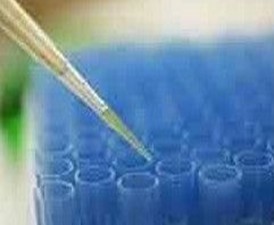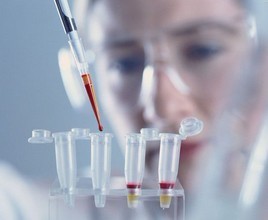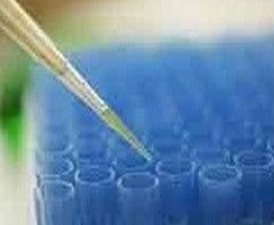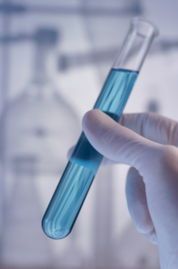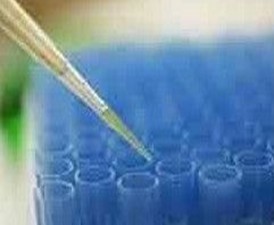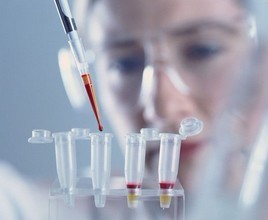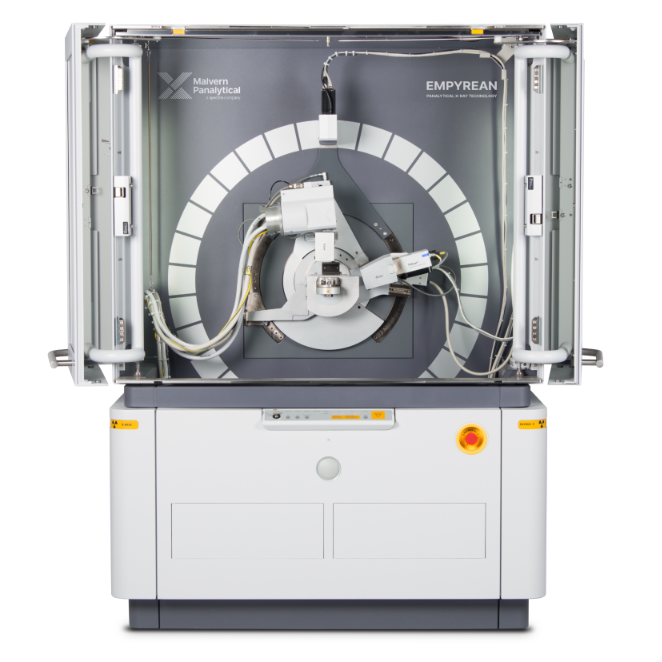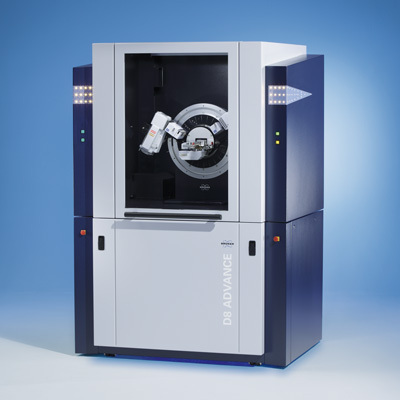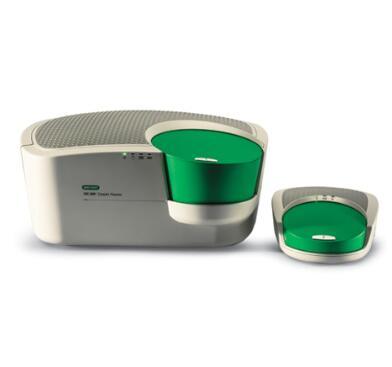我公司是国内最权威的抗体代理商,磷酸化磷脂酰肌醇激酶抗体价格优惠,磷酸化磷脂酰肌醇激酶抗体质量保证,欢迎来电订购或咨询在线客服!
英文名称 Anti-phospho-PIK3R1(Tyr556)
中文名称 磷酸化磷脂酰肌醇激酶抗体
别 名 PIK3R1(phospho Y556); GRB1; p50 alpha; p55 alpha; p85 alpha; p85; Phosphatidylinositol 3 kinase associated p85 alpha; Phosphatidylinositol 3 kinase regulatory 1; Phosphatidylinositol 3 kinase regulatory alpha subunit; Phosphoinositide 3 kinase regulatory subunit polypeptide 1 (p85 alpha); PI3 kinase p85 alpha subunit; PI3 kinase p85 subunit alpha; PI3K ; PIK3R1; PtdIns 3 kinase p85 alpha.
浓 度 1mg/1ml
规 格 0.1ml/100μg
抗体来源 Rabbit
克隆类型 polyclonal
交叉反应 Human, Mouse, Rat, Dog, Pig, Cow, Horse, Rabbit, Guinea Pig
产品类型 一抗 磷酸化抗体
研究领域 肿瘤 免疫学 信号转导 转录调节因子 激酶和磷酸酶
蛋白分子量 predicted molecular weight: 80kDa
性 状 Lyophilized or Liquid
磷酸化磷脂酰肌醇激酶抗体随着国内抗体行业的崛起,我国自主品牌的抗体,都蛮多了,质量也不错,技术在逐渐成熟,价格也比国外的廉价的多,受到国内顾客的热捧,我们公司为了方便客户,特推出阴离子转运蛋白-1抗体规格15ug、30ug、50ug、100ug,15ug和30ug等,我们全国包邮,大中城市免费快递。抗体分子是生物学和医学领域用途最为广泛的蛋白分子。抗体作为疾病预防、诊断和治疗的制剂已有上百年的发展历史。随着生命科学研究的迅猛发展,抗体工程在生物技术领域越来越占有非常重要的地位。我公司可为您提供快速的、高质量的和经济的多克隆抗体制备服务,并将成为您在科研及生产中的得力助手。
免 疫 原 KLH conjugated Synthesised phosphopeptide derived from human PIK3R1 around the phosphorylation site of Tyr556 [AE(p-Y)RE]
亚 型 IgG
纯化方法 affinity purified by Protein A
储 存 液 0.01M PBS, pH 7.4 with 10 mg/ml BSA and 0.1% Sodium azide
产品应用 WB=1:100-500 ELISA=1:500-1000 IP=1:20-100 IHC-P=1:100-500 IHC-F=1:100-500 IF=1:100-500
(石蜡切片需做抗原修复)
not yet tested in other applications.
optimal dilutions/concentrations should be determined by the end user.
保存条件 Store at -20 °C for one year. Avoid repeated freeze/thaw cycles. The lyophilized antibody is stable at room temperature for at least one month and for greater than a year when kept at -20°C. When reconstituted in sterile pH 7.4 0.01M PBS or diluent of antibody the antibody is stable for at least two weeks at 2-4 °C.
Important Note This product as supplied is intended for research use only, not for use in human, therapeutic or diagnostic applications.
产品介绍 The enzyme phosphatidylinositol 3 kinase (PI3 kinase) is a lipid kinase that generates phosphatidylinositol 3, 4, 5-triphosphate in response to receptor activation in many signal transduction pathways. Class IA PI3Ks exist as a heterodimer of a catalytic 110 kDa (p110) and a regulatory p85 subunit (e.g. p85 alpha). p85 alpha is an adaptor molecule that regulates the activity of the catalytic p110 subunit by binding to phosphorylated receptor tyrosine kinases (RTKs) through its SH2 domain and mediating the interaction between p110 and the plasma membrane. p85 alpha is necessary for insulin-stimulated increase in glucose uptake and glycogen synthesis in insulin-sensitive tissues.
Function : Binds to activated (phosphorylated) protein-Tyr kinases, through its SH2 domain, and acts as an adapter, mediating the association of the p110 catalytic unit to the plasma membrane. Necessary for the insulin-stimulated increase in glucose uptake and glycogen synthesis in insulin-sensitive tissues. Plays an important role in signaling in response to FGFR1, FGFR2, FGFR3, FGFR4, KITLG/SCF, KIT, PDGFRA and PDGFRB. Likewise, plays a role in ITGB2 signaling.
Subunit : Heterodimer of a regulatory subunit PIK3R1 and a p110 catalytic subunit (PIK3CA, PIK3CB or PIK3CD). Interacts with FER. Interacts (via SH2 domain) with TEK/TIE2 (tyrosine phosphorylated). Interacts with PTK2/FAK1. Interacts with phosphorylated TOM1L1. Interacts with phosphorylated LIME1 upon TCR and/or BCR activation. Interacts with SOCS7. Interacts with RUFY3. Interacts (via SH2 domain) with CSF1R (tyrosine phosphorylated). Interacts with LYN (via SH3 domain); this enhances enzyme activity. Interacts with phosphorylated LAT, LAX1 and TRAT1 upon TCR activation. Interacts with CBLB. Interacts with HIV-1 Nef to activate the Nef associated p21-activated kinase (PAK). This interaction depends on the C-terminus of both proteins and leads to increased production of HIV. Interacts with HCV NS5A. The SH2 domains interact with the YTHM motif of phosphorylated INSR in vitro. Also interacts with tyrosine-phosphorylated IGF1R in vitro. Interacts with CD28 and CD3Z upon T-cell activation. Interacts with IRS1 and phosphorylated IRS4, as well as with NISCH and HCST. Interacts with FASLG, KIT and BCR. Interacts with AXL, FGFR1, FGFR2, FGFR3 and FGFR4 (phosphorylated). Interacts with FGR and HCK. Interacts with PDGFRA (tyrosine phosphorylated) and PDGFRB (tyrosine phosphorylated). Interacts with ERBB4 (phosphorylated). Interacts with NTRK1 (phosphorylated upon ligand-binding).
Tissue Specificity : Isoform 2 is expressed in skeletal muscle and brain, and at lower levels in kidney and cardiac muscle. Isoform 2 and isoform 4 are present in skeletal muscle (at protein level).
Post-translational modifications : Polyubiquitinated in T-cells by CBLB; which does not promote proteasomal degradation but impairs association with CD28 and CD3Z upon T-cell activation.
Phosphorylated. Tyrosine phosphorylated in response to signaling by FGFR1, FGFR2, FGFR3 and FGFR4. Phosphorylated by CSF1R. Phosphorylated by ERBB4. Phosphorylated on tyrosine residues by TEK/TIE2. Dephosphorylated by PTPRJ. Phosphorylated by PIK3CA at Ser-608; phosphorylation is stimulated by insulin and PDGF. The relevance of phosphorylation by PIK3CA is however unclear. Phosphorylated in response to KIT and KITLG/SCF. Phosphorylated by FGR.
Similarity : Belongs to the PI3K p85 subunit family.
磷酸化磷脂酰肌醇激酶抗体Contains 1 Rho-GAP domain.
Contains 2 SH2 domains.
Contains 1 SH3 domain.
![]()



